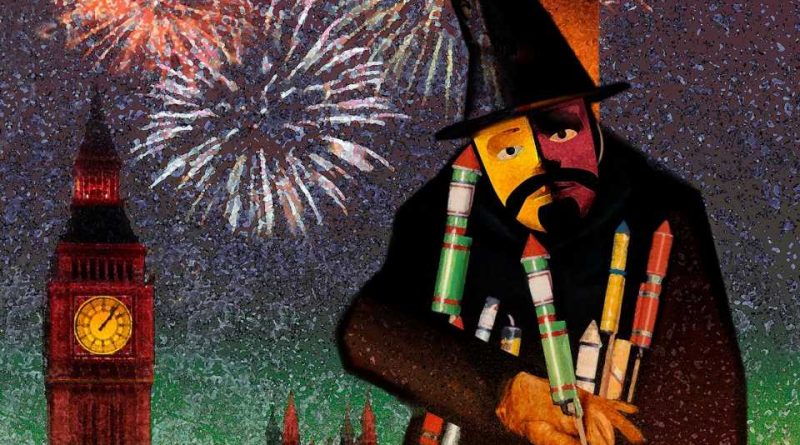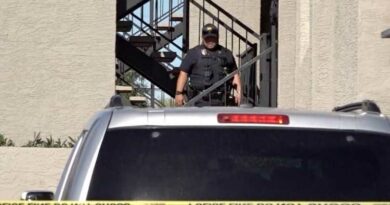Who was Guy Fawkes and why do we celebrate him? – The Sun | The Sun
EVERY year on Bonfire Night we remember Guy Fawkes by celebrating the failed gunpowder plot of 1605.
But who is Guy Fawkes and what was the gunpowder plot? Here's why we Remember, Remember the 5th of November.
Who were Guy Fawkes and Robert Catesby?
On November 5, 1605, a group of dissident Catholics plotted to blow up the Houses of Parliament and kill King James I.
Two members of that group included Guy Fawkes and Robert Catesby.
Guy Fawkes
Guy "Guido" Fawkes was the trigger man drafted in to set the fuse to blow up the Palace of Westminster on November 5, 1605.
Born in York he converted to Catholicism following the death of his father and left to become a mercenary fighter for the Spanish against the Protestant Dutch.
He was given the responsibility to set and light the fuse of gunpowder as he had extensive knowledge in explosives.
Read More on Bonfire Night
Jeremy Vine viewers clash as dog owners say fireworks should be banned for pets
Mum shares savvy potato hack so kids don’t burn themselves on sparklers
However, he was caught red-handed by the King's men beneath the palace, attempting to explode 36 barrels of gunpowder.
He was then tortured until he gave up his co-conspirators.
Traditionally traitors in 17th-century England were hanged, drawn and quartered in public.
However, Fawkes avoided the barbaric punishment by leaping from the platform, to avoid having his testicles cut off, and broke his neck.
Robert Catesby
The ringleader of the plot was Warwickshire-born Catholic Robert Catesby.
Most Read in News
Hunt for black Vauxhall Insignia after woman gunned down in her own home
Waitrose sushi chef sues boss because he sent him work ROTA after midnight
Ukraine nurse 'HANGED in street by pro-Russian cops after confronting troops'
A look inside the life of Matt Hancock and his net worth
Catesby became deeply religious as he matured after what was said to be a wild youth.
He wanted to bring England back to the Catholic faith and is understood to have colluded with the Spanish government in 1602 about instigating a rebellion to achieve that goal.
He later came up with the plan to blow up Parliament and kill King James I in order to install his daughter as the new Catholic ruler.
But after Fawkes' capture, he was eventually tracked down and killed in a shoot-out on the morning of November 8, 1605, at Holbeach House near Kingswinford, Staffs.
Those plotting alongside Robert Catesby and Guy Fawkes were John and Christopher Wright, Robert and Thomas Wintour, Thomas Percy, Robert Keyes, Thomas Bates, John Grant, Ambrose Rookwood, Sir Everard Digby and Francis Tresham.
What was the gunpowder plot?
The gunpowder plot was centred around a group of Roman Catholic revolutionaries furious at the persecution of their faith in England.
After 45 years of hounding under the reign of Elizabeth I the plotters had hoped their struggles would end but they failed to after the Protestant King James I ascended to the throne.
Catesby and his friends planned to take matters into their own hands and kill the King and his ministers by blowing up the Palace of Westminster during the state opening of Parliament.
By renting a house near the palace Guy "Guido" Fawkes managed to smuggle 36 barrels of gunpowder under the palace ready to blow it sky high.
Physicists have calculated that the blast would have obliterated an area 1320ft wide.
The scheme was only rumbled when an anonymous letter was sent to Lord Monteagle warning him not to go to the House of Lords.
Explosives expert Fawkes was left in the cellars to light the fuse when he was caught by guards.
After his capture he was tortured till he gave up his fellow plotters – all of them died, either resisting capture or put to trial, convicted and executed.
Why do we celebrate Bonfire Night with fireworks?
Bonfire Night is celebrated in the UK by lighting bonfires, burning of "Guys" and setting off fireworks.
Fireworks are used as they are powered by gunpowder, representing the explosives that were never detonated.
Bonfires are set alight, and people often make straw dummies that represent Guy Fawkes to throw into the flames.
It is also known as Guy Fawkes Night or Fireworks Night and is remembered annually on November 5 as this was the day on which Guy Fawkes was arrested in 1605.
Source: Read Full Article










